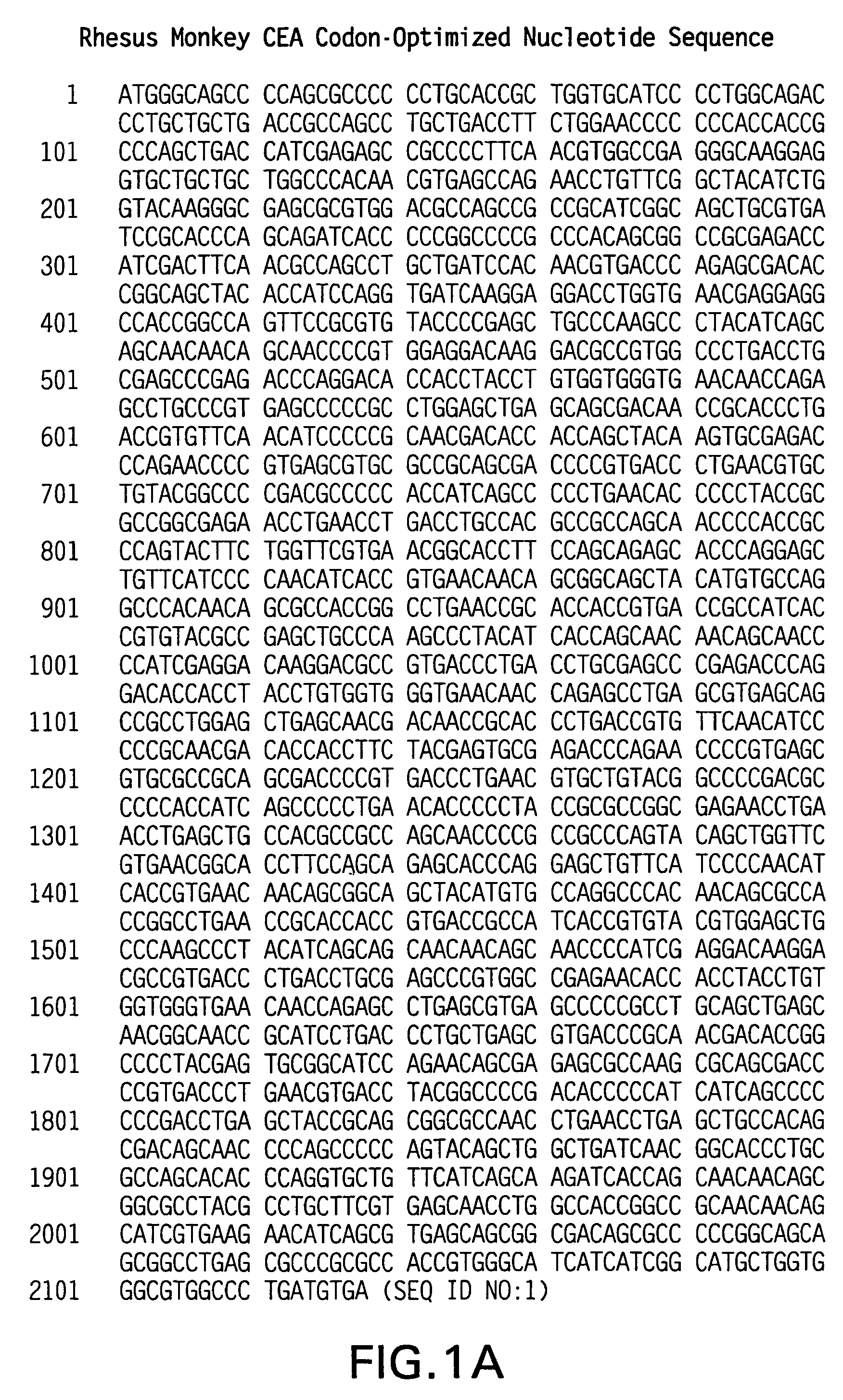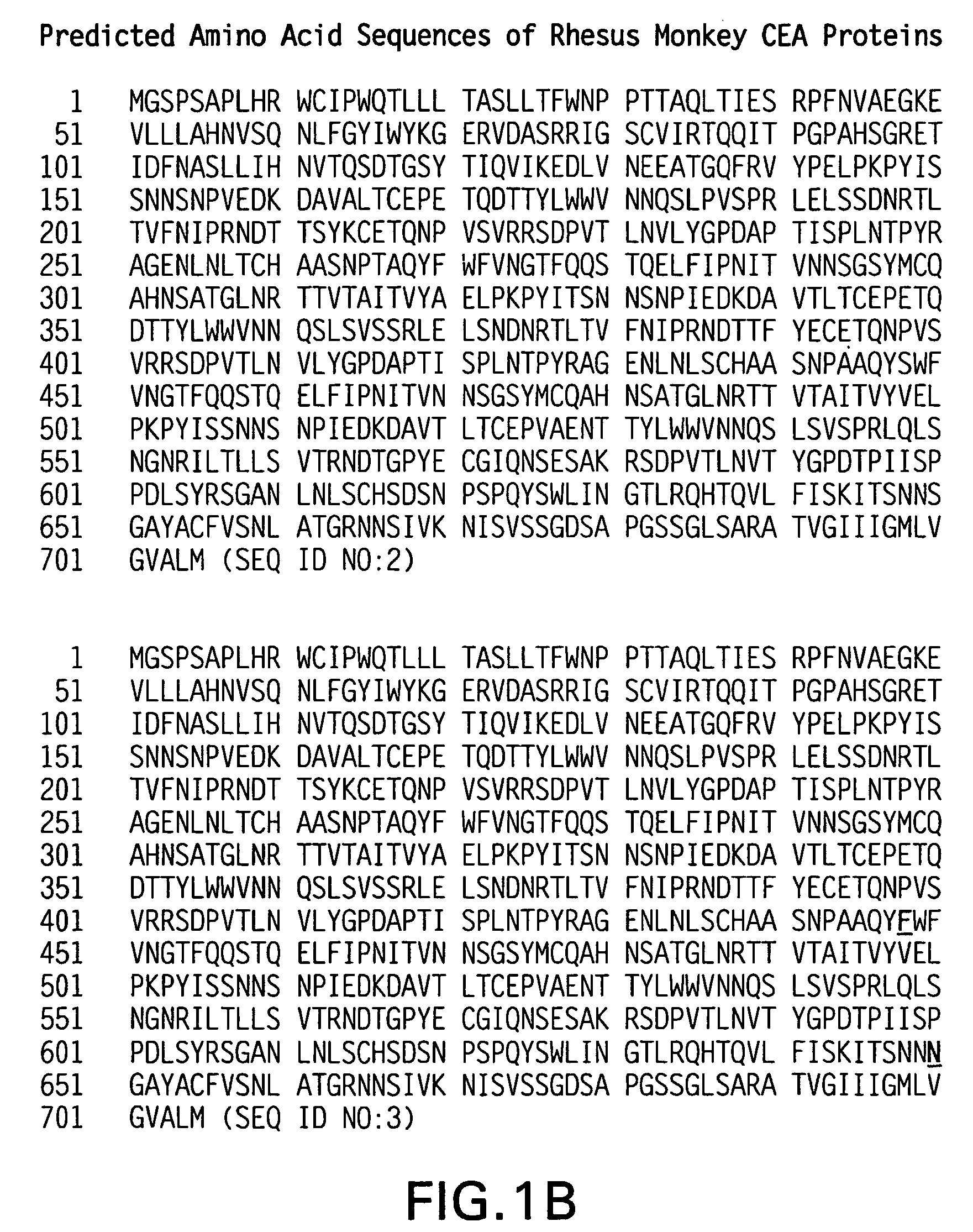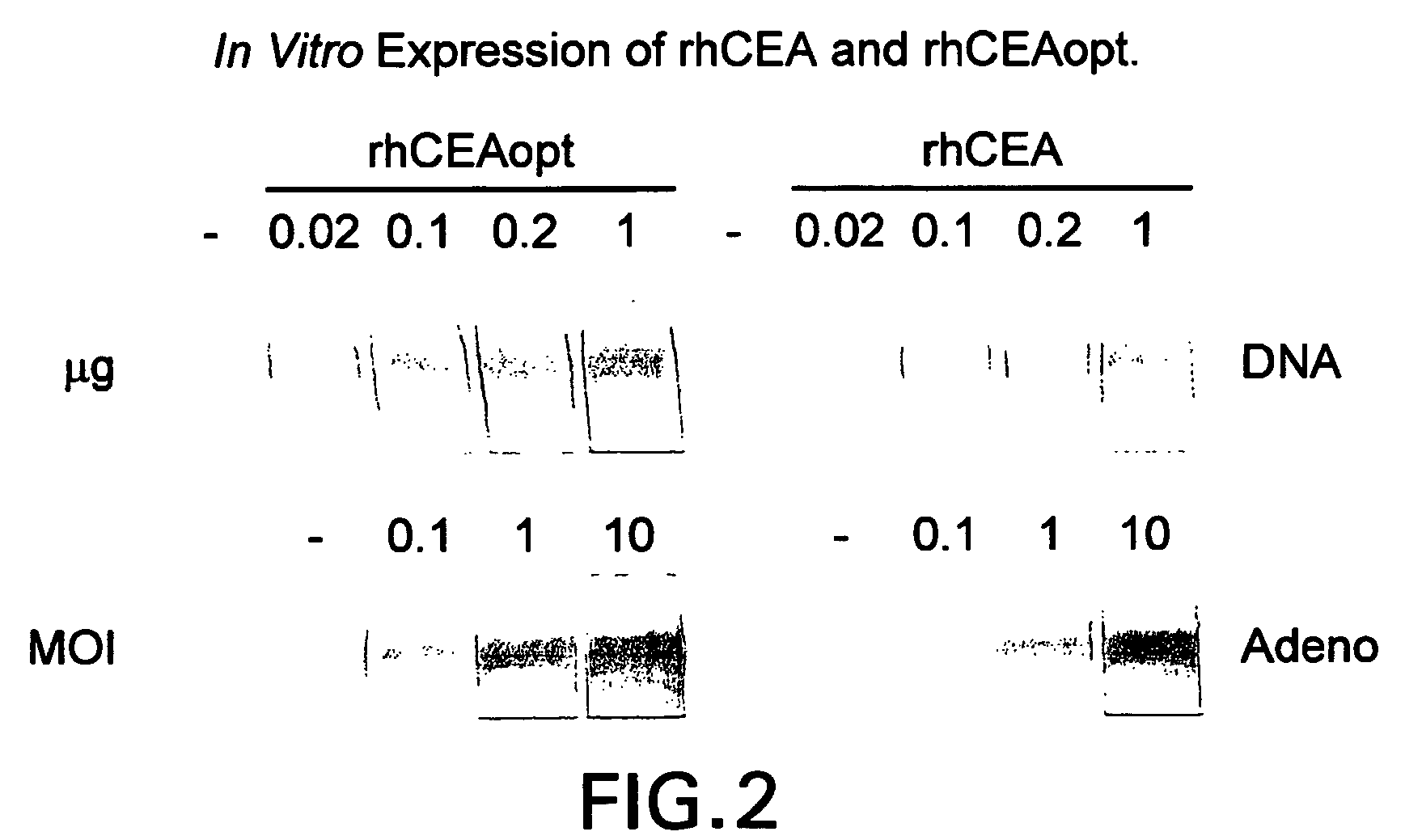Synthetic gene encoding rhesus monkey carcinoembryonic antigen and uses thereof
a carcinoembryonic and synthetic gene technology, applied in the field of cancer treatment, can solve the problems of hindering the development and commercialization of many vaccines, and achieve the effect of convenient insertion, removal or replacemen
- Summary
- Abstract
- Description
- Claims
- Application Information
AI Technical Summary
Benefits of technology
Problems solved by technology
Method used
Image
Examples
example 1
Construction of Codon-Optimized rhCEA
[0092] Wild-type rhesus monkey amino acid sequences were deduced from nucleotide sequences isolated from two different rhesus monkeys. To isolate and determine wild-type nucleotide sequences encoding the rhesus monkey CEA protein, nucleotide sequences from the 5′ and 3′ untranslated regions (UTR) of all known members of the human CEA family were aligned to identify highly conserved regions of the CEA DNA. Based on the CEA gene family homologies, degenerate oligonucleotide primers were designed and PCR conditions were optimized to amplify the rhesus CEA cDNA by reverse transcriptase polymerase chain reaction using RNA isolated from colon samples from two different Rhesus monkeys (Macaca Mulatta). Amplified PCR products of about 2100 bp, the expected size for a CEACAM-5 homolog, were independently obtained from both RNA samples and were purified from agarose gel. Partial sequence analysis of both PCR products revealed high homology with human CEA...
example 2
Plasmid Constructs and Adenovirus Generation
[0094] pV1J-rhCEAopt: RhCEAopt was excised as an EcoRI fragment from pCR-blunt-rhCEAopt vector and inserted in pV1J-nsA vector, obtaining pV1J-RhCEAopt.
[0095] pAd5-rhCEAopt and pAd24-rhCEAopt: For adenovirus 5 generation, pMRK-rhCEAopt was obtained by subcloning rhCEAopt as a HincII / XhoI fragment in SwaI / SalI sites of the polyMRK vector (See Emini et al., WO 02 / 22080, which is hereby incorporated by reference). For Ad24 generation, the expression cassette was excised from pMRK-rhCEAopt as an SspI / AscI fragment and inserted in the shuttle vector pABS-Ad17-3 in the EcoRI site, thus generating pABS-Ad17-rhCEAopt. A PacI / StuI fragment from pMRK-rhCEAopt and a XhoI / XbaI fragment from pABS-Ad17-rhCEAopt containing the expression cassette for rhCEAopt and E1 flanking Ad5 and Ad17 / 24 regions respectively, were recombined to ClaI linearized pAd5 or SwaI linearized pAd24 using BJ5183 E. Coli cells. The resulting plasmids were pAd5-rhCEAopt and pA...
example 3
In vitro Expression of Rhesus CEA
[0097] Rhesus CEA expression from the constructs described above was verified by western blot and FACS analysis. Plasmids were transfected in HeLa cells with Lipofectamine 2000 (Life Technologies) according to manufacturer directions. Adenovirus infections were performed in serum-free medium for 30 min at 37° C., then fresh medium was added to cells. 48 hours later, whole cell lysates were analyzed by western blot using a rabbit polyclonal serum against human CEA (Fitzgerald Industries International Inc., Concord Mass., 1:1500 dilution). Rhesus CEA was detected as a 180-200KDa band.
[0098] Western blot analysis demonstrated that transfection of HeLa cells with an expression plasmid (pV1J-rhCEAopt) carrying the optimized rhesus CEA cDNA (rhCEAopt) at different doses showed 100 fold greater protein levels than a similar vector carrying the native cDNA (pV1J-rhCEAopt). See FIG. 2. Similarly, infection of HeLa cells with a first generation ΔE1-ΔE3 aden...
PUM
 Login to View More
Login to View More Abstract
Description
Claims
Application Information
 Login to View More
Login to View More - R&D
- Intellectual Property
- Life Sciences
- Materials
- Tech Scout
- Unparalleled Data Quality
- Higher Quality Content
- 60% Fewer Hallucinations
Browse by: Latest US Patents, China's latest patents, Technical Efficacy Thesaurus, Application Domain, Technology Topic, Popular Technical Reports.
© 2025 PatSnap. All rights reserved.Legal|Privacy policy|Modern Slavery Act Transparency Statement|Sitemap|About US| Contact US: help@patsnap.com



